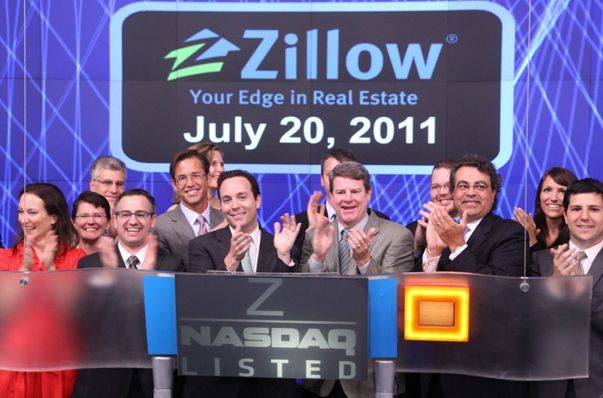
When Zillow went public at $20 per share two years ago, some doubters believed that the online real estate company would get hammered in the public markets.
Too small. Too niche. Overblown. And overvalued.
Boy, were they ever wrong. Zillow stock has more than tripled since its debut on the Nasdaq, fueled in part by a recovering housing market; a series of acquisitions and a slate of new online marketing products geared towards real estate agents.

Now trading at around $66 per share, Zillow’s market value stands at a very impressive $2.3 billion. So far this year, the stock is up 140 percent. Can it go much higher?
There remain doubters, including those who point to a slowing revenue growth rate. (71 percent during the first quarter, compared to 73 percent in the fourth quarter).
But Zillow has shown the ability to operate at a profit, and still has a pile of cash, both from the IPO in which it raised $80 million and a secondary offering from last fall that pulled in $147 million. (It had $179 million in cash, cash equivalents and short-term investments at the end of the first quarter).
A piece this week on Insider Monkey suggests that it may be time for Zillow investors to “head for the exits.”
“Rising marketing costs, decelerating top-line growth, disappointing launches for new product lines and staggering valuations make this stock highly vulnerable to any whiff of bad news when Q2 results are announced. Even if Zillow manages to deliver exceptional results, it’s hard to see how this nosebleed stock can move any higher.”
Zillow has certainly encountered those criticisms in the past, and yet the stock has defied the naysayers. The company posted revenue of $39 million during the first quarter, and a net loss of $3.7 million. In remarks earlier this year at Seattle University, Zillow CEO Spencer Rascoff said Zillow’s dual-class stock arrangement allows the company “to focus on the long-term” rather than be “subjected to the whims of quarterly results.”
But in remarks earlier this week with The Motley Fool, Rascoff admitted that companies at Zillow’s stage are susceptible to missteps.
“We’re seven or eight years old. This is a dangerous time at a tech company. Years 5 to 15 are where most tech companies lose their way. It’s where the original management team tends to churn out, especially a couple of years post-IPO, and it’s where companies settle into mediocrity and start accepting mediocrity. That can be very cancerous to an organization.”
Can Rascoff and crew run against mediocrity, continuing to innovate and upend the real estate market? Most of the management team from the IPO days are still hanging around, and co-founders Rich Barton and Lloyd Frink remain involved.
Meanwhile, Zillow is pushing hard to establish themselves as the premier and dominant brand in real estate, planning to spend $20 million to $30 million this year on a national ad campaign.
Zillow announces its second quarter results on August 6th. Here’s a look at the historical performance of Zillow.




